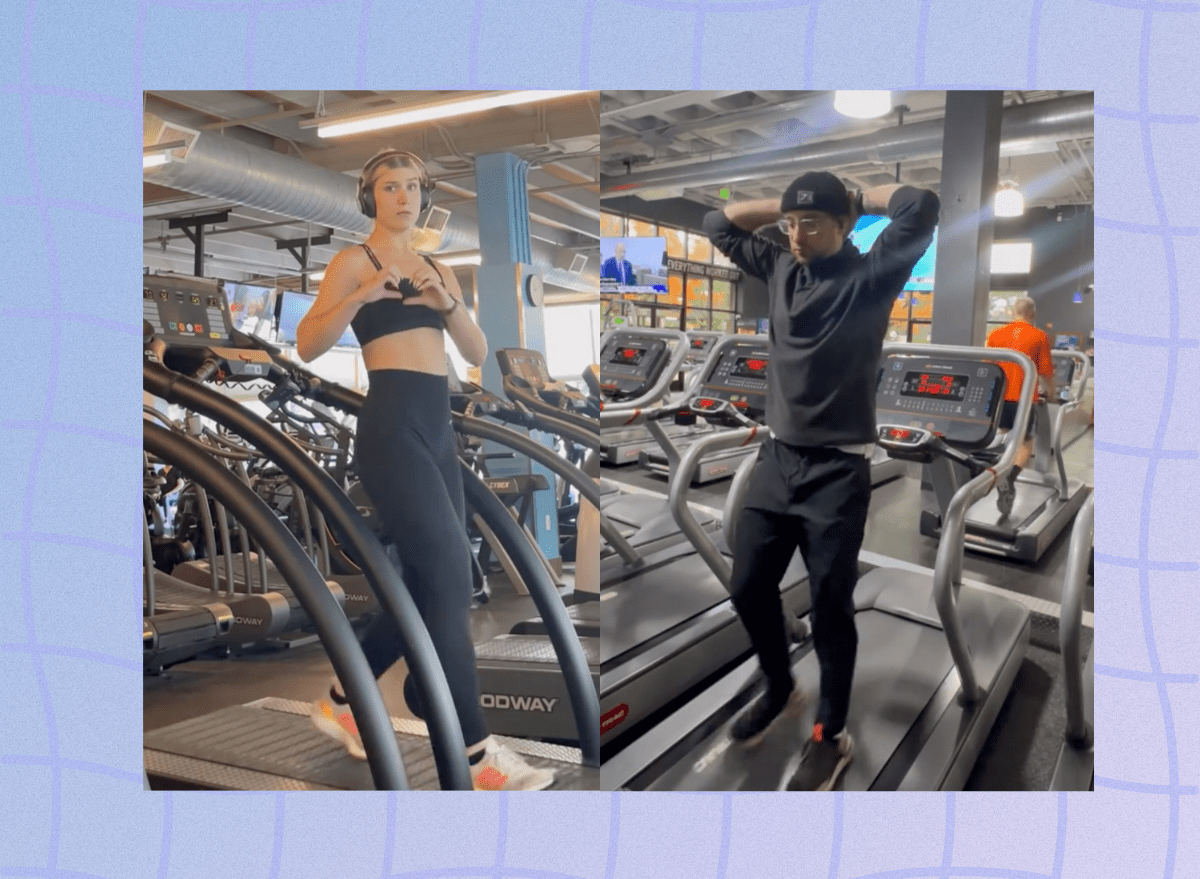Why People Swear by the ‘Backward Treadmill Workout’

“Not only has [backward treadmill walking] helped with my mobility, but it’s also helped with my coordination. I no longer feel like I have ‘old lady knees’ that crack and crick with each step, ” TikToker Chayse Byrd explains. Since starting her backward walking routine, Byrd also notes she can perform a wide variety of workouts, and her ankle and knee range of motion has vastly improved.
Sounds like magic, right? Workout enthusiasts on TikTok are raving about the benefits of walking backward on a treadmill, so we spoke with an expert who answers all the questions you’ll want to know about the trend of walking backward.
The benefits of walking backward:
Walking, in general, provides a wealth of benefits. It can be easily modified to suit your fitness level, goals, and workout schedule. You can switch up your speed, increase the incline, add rucking (wearing a weighted backpack) to your routine, and even step up your game with the added challenge of walking backward.
Research indicates that backward walking can be a stellar exercise for improving your gait, functional mobility, and balance. It’s also an extraordinary option for individuals with knee osteoarthritis, ACL reconstruction therapy, and back pain.
“Backward walking results in less knee adduction, which can lead to less wear and tear on knees with medial injuries,” explains Domenic Angelino, CSCS, CPT from Trainer Academy. “[It also reduces] the stress placed on certain parts of the knee joint that would’ve been present if engaging in a comprehensive forward walking program instead. It [allows] blood flow to increase to the region without as much risky joint stress.”
Angelino points out that backward walking on an incline can enhance the engagement of your gastrocnemius muscle compared to simply walking backward on a flat surface. “This can help increase the endurance of your calves,” he says.
Backward treadmill walking may even improve your posture. In her video, Byrd explains that before every workout, she walks backward for five minutes at two miles an hour at a 5% incline. She notes that her posture has greatly improved—in fact, it’s “nearly perfect.”
Another TikTok user and online personal trainer @coach_albet dubs backward walking a total “game-changer” for him. He notes, “Walking backward is an exercise I recommend for anyone dealing with knee, lower back, or ankle issues … me and my clients walk backward almost every day.”
As with any new form of training, safety is key. Angelino stresses the importance of starting slowly to avoid falls or injuries and practicing your backward walk outdoors on a flat surface before doing it on the treadmill. He also recommends working with a personal trainer when you move your routine to the treadmill, as it will take ample time to get the knack of it.









